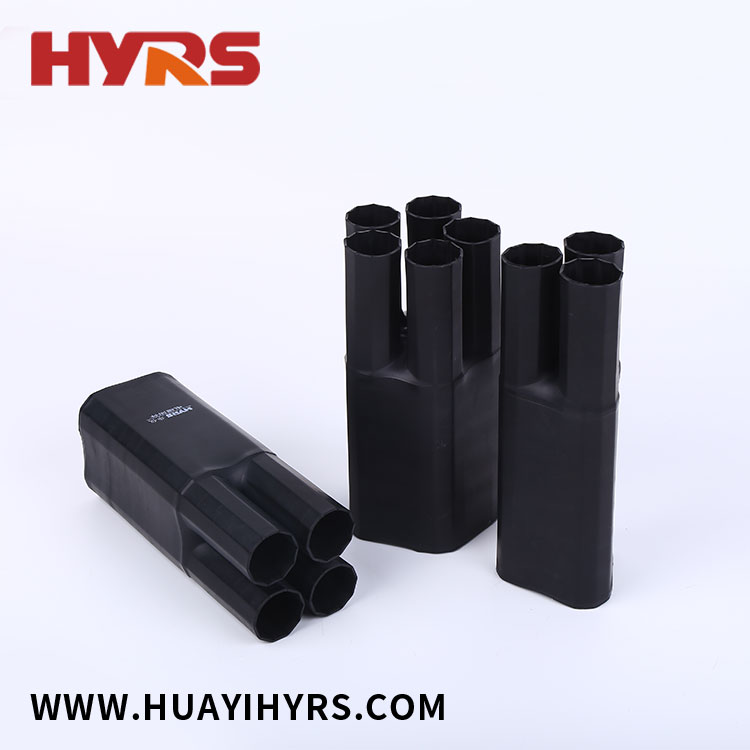Exploring the Materials Behind Heat Shrinkable Breakout: Composition and Performance Impacts
2024-06-17
In the realm of cable management, Heat Shrinkable Breakout (HSBO) sleeves play a crucial role in providing strain relief, environmental protection, and mechanical durability. The performance of these sleeves is largely determined by the materials used in their construction. Let's delve into the common materials used in HSBO sleeves and how they affect performance.
Polyolefin Materials
One of the most commonly used materials in the construction of HSBO sleeves is polyolefin. Polyolefins, such as polyethylene and polypropylene, are thermoplastic polymers that exhibit excellent mechanical properties, chemical resistance, and electrical properties. They are also known for their good processability, which allows for easy manufacture of HSBO sleeves.
Polyolefin-based HSBO sleeves offer excellent strain relief capabilities. They conform tightly to cables, creating a secure bond that resists strain and mechanical stress. Additionally, polyolefins are resistant to moisture, chemicals, and other contaminants, providing effective environmental protection for cables.
Rubber Materials
Rubber materials, such as silicone and ethylene-propylene rubber (EPR), are also commonly used in the construction of HSBO sleeves. Rubber offers superior flexibility and elasticity, making it ideal for applications where cables need to conform to irregular shapes or curves.
Rubber-based HSBO sleeves provide excellent strain relief and conformability. They can stretch and conform to cables easily, ensuring a tight and secure fit. Additionally, rubber materials offer good resistance to abrasion, impact, and chemicals, providing excellent mechanical protection for cables.
Flame-Retardant Materials
In some applications, flame-retardant materials are required for HSBO sleeves. These materials are designed to limit the spread of fire in the event of a cable failure or accident.
Flame-retardant HSBO sleeves are typically constructed using flame-resistant polymers or compounds that incorporate flame-retardant additives. These materials resist ignition and limit the spread of flame, reducing the risk of fire-related damage and hazards.
Effect on Performance
The choice of material used in the construction of HSBO sleeves has a significant impact on their performance. Polyolefin materials offer excellent strain relief, environmental protection, and processability, while rubber materials provide superior flexibility and conformability. Flame-retardant materials, on the other hand, enhance the safety of the sleeve by limiting the spread of fire.
In selecting an HSBO sleeve, it's essential to consider the specific requirements and conditions of the application. The material chosen should be able to withstand the expected mechanical stress, environmental exposure, and safety regulations. By understanding the properties and limitations of different materials, you can make an informed decision that ensures the performance and reliability of your HSBO sleeves.



